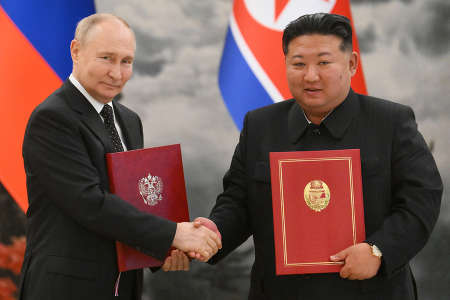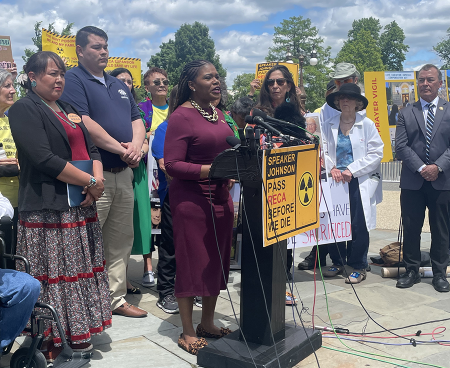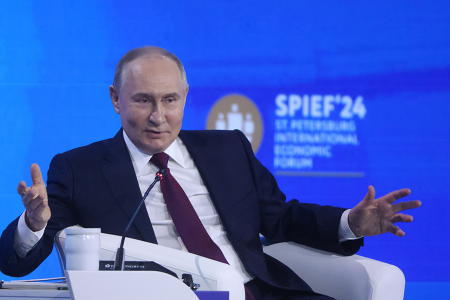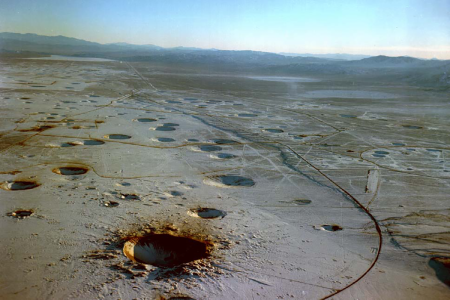Sentinel ICBM Costs "Unacceptable and Unsustainable," Say Critics
The Pentagon review of the program claims that there are no alternatives to the Sentinel program that could meet their "requirements" for 400 missiles through the year 2070.
For Immediate Release: July 9, 2024
Media Contact: Daryl G. Kimball, executive director, (202) 463-8270 ext. 107; Xiaodon Liang, senior policy analyst, (202) 463-8270 ext. 113
(Washington, D.C.)—The Department of Defense announced yesterday that the Sentinel intercontinental ballistic missile (ICBM) program will continue despite a projected 81% cost overrun.
The Pentagon now believes the Sentinel program will cost taxpayers $141 billion to build, up from an original estimate of $78 billion in 2020. The Pentagon also ordered a restructuring of the program that will very lead to a delay the schedule for missile system's initial operating capability (IOC) of "several years." The initial IOC goal was 2029; in January the Air Force announced there would be a further 2-year delay.*
The Pentagon review of the program claims that there are no alternatives to the Sentinel program that could meet their "requirements" for 400 missiles through the year 2070 and the Sentinel is a higher priority than other programs, which will face budget cuts as a result of the Sentinel missile cost growth.
“The department’s decision fits a pattern of willful avoidance of alternatives, dating back to the origins of the Sentinel ICBM program,” said Daryl Kimball, executive director of the Arms Control Association. "The Sentinel missile program is not only too costly, but it is redundant and dangerous."
The announcement follows a mandatory review of the program that was triggered by a breach of the critical cost growth thresholds in the Nunn-McCurdy Act, which the Defense Department first acknowledged in January.
"The Pentagon reportedly assessed the costs of a Minuteman III service life extension through 2070 as part of the Nunn-McCurdy process, but the time frame chosen, and force size assumptions prejudge the outcome of the analysis. It is unrealistic and foolhardy to assume that the United States’ strategic requirements will not change over the next 50 years," Kimball said.
A decade ago, Air Force leadership ignored the results of a 2014 RAND study commissioned by the service itself which found that “incremental modernization and sustainment of the current Minuteman III force is a cost-effective alternative that should be considered within the [formal Assessment of Alternatives].” Again in 2021, the Pentagon decided to ignore a request from 20 Democrats for an in-depth analysis of whether the existing Minuteman III force could be fielded further into the future.
Earlier this year, the Defense Department made clear in congressional testimony that it never had any intention of conducting a thorough review of “the projected cost of completing the program based on reasonable modification of [current] requirements” as mandated by the Nunn-McCurdy Act. Testifying April 30 before the House Armed Services Committee’s strategic forces subcommittee, the undersecretary of defense for acquisition and sustainment, Bill LaPlante, admitted that the review was focusing on “small r requirements” only.
“The Secretary of Defense should evaluate whether the Minuteman III could be extended to 2030, 2040, and even 2050 and at what cost, as recommended by Sen. Elizabeth Warren and Rep. John Garamendi in a March 13 letter to Kristyn Jones, assistant secretary of the Air Force for financial management and comptroller,” said Xiaodon Liang, senior policy analyst with the Arms Control Association.
"Congress should also exercise its oversight responsibilities by tasking the Government Accountability Office to conduct a review of the Pentagon’s handling of the Nunn-McCurdy process for the Sentinel program," Liang suggested.
“The skyrocketing cost of the Sentinel program is also squeezing the Air Force’s other priorities,” Liang noted.
Last month, Air Force Secretary Frank Kendall said the service was being forced to scale back its ambitions for the Next Generation Air Dominance fighter program because of cost concerns. And in April, senior Air Force officers said the service’s next-generation tanker and airlifter programs likely will be postponed because of nuclear rearmament costs. Nuclear modernization is now consuming roughly a quarter of the Pentagon’s funds going toward Major Defense Acquisition Programs, according to the White House’s fiscal year 2025 budget proposal.
“The Sentinel missile program doubles down on an obsolete nuclear deterrence concept with dangerous implications for strategic stability,” Kimball said.
"Russia and the United States still cling to dangerous Cold War-era nuclear doctrines and deploy thousands of high-yield nuclear warheads on hundreds of ICBMs, designed to annihilate each other’s military and command capabilities within 30 minutes of a presidential launch order," he noted.
"Maintaining a large ICBM force in fixed locations makes them vulnerable to pre-emptive attack, which increases the risk of false alarms and catastrophic miscalculation," Kimball said.
“In reality, ICBMs are not necessary to deter Russian or Chinese nuclear attack. The United States deploys more than 1,000 nuclear warheads on invulnerable strategic ballistic missile submarines,” Kimball said.
Nevertheless, proponents argue that land-based ICBMs, which are now deployed in North Dakota, Montana, Wyoming, Colorado, and Nebraska, are needed to act as a “sponge” to absorb a significant portion of Soviet nuclear attack. As a recent study published in Scientific American indicates, such a strategy means that tens of millions of people living in and downwind from those states would be sacrificed in a nuclear war without their knowledge or consent.
“The astronomical costs of Sentinel are unacceptable and unsustainable,” argues Liang. “Rather than rush ahead, the Pentagon and the Congress should pause the Sentinel program and deemphasize the role of ICBMs, seriously evaluate the option of extending the life of a portion of the current Minuteman III ICBM force at a lower cost, and seek ways to create momentum for deeper mutual reductions in the bloated U.S. and Russian nuclear arsenals,” he suggested.
*Updated to reflect further information regarding schedule delays for the system's initial operating capability.







